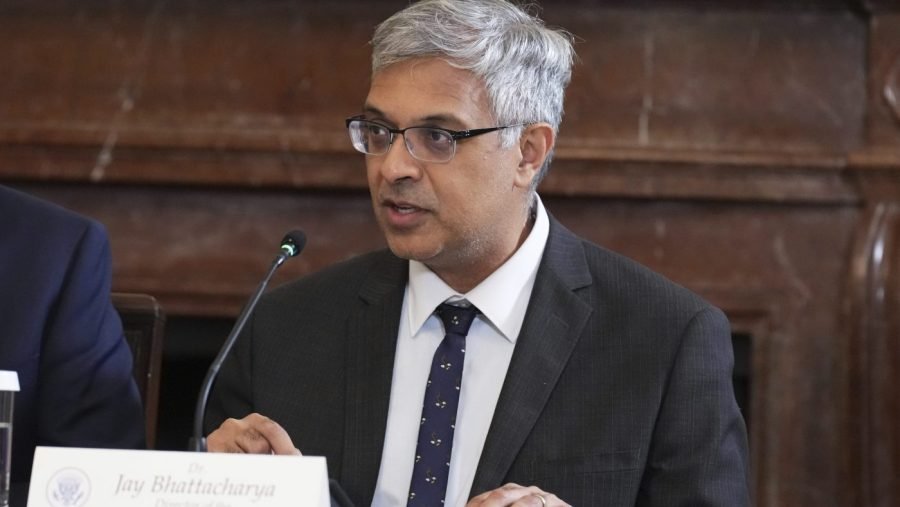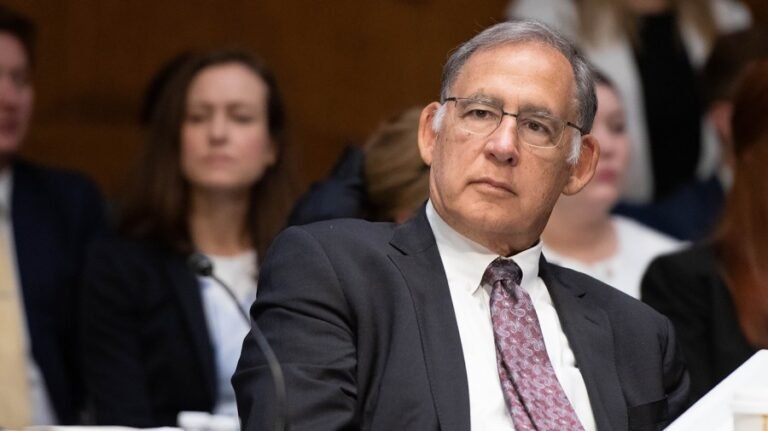
National Institutes of Health Director Jay Bhattacharya faced questions from senators during an Appropriations subcommittee hearing Tuesday, as the federal government agency has taken hits to its staffing levels and grant-making ability since under President Trump.
Senators focused on the Trump administration’s requested 2026 budget, which calls for cutting NIH’s funding by $18 billion from 2025 levels.
That roughly 40 percent reduction means 1,800 fewer new grants would be awarded and funded through the NIH and would impact many current grants, according to STAT.
The budget also details Trump administration plans to restructure the agency and consolidate its 27 institutes into eight.
Congress has the final say on how federal dollars are allocated, so the final NIH budget could look different.
Here are four takeaways from the hearing:
Bhattacharya owns grant cuts
National Institutes of Health grant awards have plummeted since Trump returned to the White House in late January. One analysis found that the NIH has issued $2.3 billion less in new grant funds between January and April of this year than it did during that same time in 2024.
Sen. Tammy Baldwin (D-Wis.) questioned Bhattacharya about the drop in grant funding and asked who was behind the decision to terminate or withhold funding.
Bhattacharya, at first, tried to sidestep the question but eventually took responsibility for the agency’s grant cancellations.
“There [have been] changes in priorities for the NIH, to move away from politicized science. I’ve made those decisions,” he said. “Decisions regarding, for instance, Harvard and some other institutions, that’s joint with the administration.”
Aims for settlement with universities
The NIH has canceled $9.5 billion worth of funding through 2,100 research grants since January and another $2.6 billion in contracts supporting clinical trials, according to a recent letter signed by more than 2,000 NIH scientists condemning the Trump administration’s research cuts.
Democratic Senators hammered Bhattacharya over the administration’s desire to greatly reduce the NIH’s spending.
Sen. Dick Durbin (D-Ill) noted that research in his home state has taken a hit and that Northwestern University has not “received a penny in NIH grants in 11 weeks.”
“I’m very hopeful that a resolution can be made with the universities where those decisions have been made,” Bhattacharya said.
Wants geographically dispersed NIH funding
Sen. Susan Collins (R-Maine) questioned Bhattacharya over the NIH’s decision to impose a 15 percent cap on indirect costs in grant research. Bhattacharya said that he could not speak directly to the cap since it is subject to litigation.
Instead, he spoke to how changes in the NIH’s grant funding process are an opportunity to ensure that funds are more broadly distributed across the country’s research institutions. He argued that the agency’s research funding “very concentrated” with 20 universities receive 60 percent to 65 percent of NIH’s funding.
“It’s absolutely vital that the NIH’s investments are geographically dispersed,” he said. “I would love to work with Congress to think of ways to make NIH’s investment in scientific research more geographically dispersed.”
Dodges question on long-term impacts
Sen. Patty Murray (D-Wash.) pushed Bhattacharya to answer long-standing questions about the consequences of the Trump administration’s changes to the NIH, including just how many staff members have been terminated or left the agency amid threats of future layoffs.
Murray also asked the director just how many clinical trials have been impacted by the NIH’s grant terminations or pauses and how many fewer clinical trials the agency would be able to fund next year if the proposed budget were approved.
Bhattacharya said he could not answer either question but pledged to send a response to Murray’s office by the end of the day.


